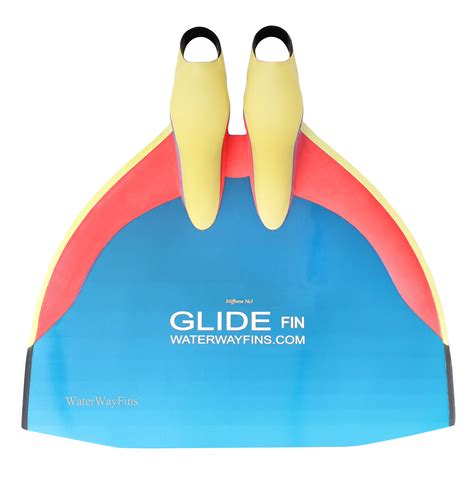The Ultimate Guide to Monofins: Enhance Your Underwater Performance
Introduction
A monofin, a powerful underwater propulsion device, offers unparalleled freedom and speed for swimmers and divers. Composed of a single large fin, it mimics the tail of a marine mammal, allowing for efficient and graceful movement through water.
Benefits of Using a Monofin
-
Increased Speed: Monofins generate greater thrust than traditional two-fin systems, resulting in significantly faster swimming speeds.
-
Reduced Energy Expenditure: The hydrodynamic shape of a monofin minimizes drag and optimizes energy consumption, allowing swimmers to cover greater distances with less effort.
-
Enhanced Maneuverability: The streamlined design of a monofin provides exceptional maneuverability, enabling divers to navigate complex underwater environments with ease.
-
Improved Leg Strength: Monofinning engages multiple muscle groups in the legs, including the glutes, hamstrings, and quadriceps, leading to increased strength and endurance.
Choosing the Right Monofin
Selecting the appropriate monofin depends on several factors:
-
Leg Size: The blade length should match the length of your legs for optimal performance.
-
Skill Level: Beginners may prefer softer blades, while experienced swimmers and divers can opt for stiffer blades for increased power.
-
Purpose: Recreational swimmers may choose shorter, more flexible blades, while endurance athletes and deep divers may favor longer, more rigid blades.
Types of Monofins
-
Traditional Monofins: These have a single large blade extending from the base of the foot to the tail, providing a powerful and efficient kick.
-
Split Monofins: These feature two separate blades connected by a flexible joint, allowing for greater maneuverability and comfort.
-
Carbon Fiber Monofins: Constructed from lightweight and durable carbon fiber, these monofins excel in performance and speed.
How to Use a Monofin
Step 1: Adjust the Bindings

Tightly secure the foot buckles to ensure a comfortable and snug fit. The blade should extend slightly beyond your fingertips when you are fully extended.
Step 2: Enter the Water
Slowly submerge yourself in the water and practice kicking gently to get a feel for the monofin's motion.
Step 3: Initiate the Kick
Keep your legs straight and together, and initiate the kick from the hips. Extend your legs and thrust your feet downward with a powerful, fluid motion.
Step 4: Control Your Speed

Vary the frequency and intensity of your kicks to control your speed and maneuverability. For faster swimming, increase the speed and power of your kicks.
Tips and Tricks
-
Start Gradually: Begin with short, gentle sessions to accustom your body to the new movement pattern.
-
Use a Kickboard: A kickboard can help you focus on your leg technique without worrying about buoyancy.
-
Practice in Shallow Water: Practice in shallow water until you become comfortable with the monofin before venturing into deeper waters.
-
Stay Hydrated: Monofinning can be demanding, so it is crucial to stay well-hydrated by drinking plenty of water before and during your dive.
-
Stretch Regularly: Regular stretching can help prevent muscle soreness and improve flexibility for monofinning.
Comparison of Monofins
| Feature |
Traditional |
Split |
Carbon Fiber |
| Blade Size |
Large, single blade |
Two separate blades |
Lightweight, durable |
| Speed |
High |
Moderate |
Highest |
| Maneuverability |
Good |
Excellent |
Very good |
| Cost |
Affordable |
Moderate |
Expensive |
| Suitability |
Recreational, competitive |
Recreational, maneuvering |
High-performance |
Table of Monofin Brands and Models
| Brand |
Model |
Blade Length |
Material |
Price Range |
| Finis |
Monofin FX |
28" - 34" |
Polypropylene |
$90 - $120 |
| Aqua Sphere |
Seavenger Monofin |
29" - 35" |
Polypropylene |
$70 - $100 |
| Mares |
X-Wing Monofin |
28" - 34" |
Polyurethane |
$150 - $200 |
| Cressi |
Gara Modular Monofin |
29" - 35" |
Carbon fiber |
$250 - $350 |
| Dive Rite |
XT Monofin |
28" - 34" |
Carbon fiber |
$300 - $400 |
Table of Monofin Applications
| Application |
Monofin Type |
Recommended Features |
| Recreational Swimming |
Traditional, Split |
Moderate blade stiffness, comfortable foot pockets |
| Underwater Exploration |
Split, Carbon Fiber |
Long blade length, excellent maneuverability |
| Competitive Monofinning |
Carbon Fiber |
Rigid blade, high speed potential |
| Aquatic Exercise |
Traditional, Split |
Adjustable bindings, comfortable foot pockets |
| Underwater Photography |
Split, Carbon Fiber |
Stealthy design, high maneuverability |
Table of Monofin Safety Guidelines
| Safety Guideline |
Importance |
| Dive with a Buddy |
Never dive with a monofin alone. |
| Check Equipment Regularly |
Inspect your monofin for any damage before each dive. |
| Use a Dive Flag |
Display a dive flag to alert boaters of your presence. |
| Stay Within Your Limits |
Know your limits and do not exceed them. |
| Seek Training |
Consider obtaining monofin training from a certified instructor. |
Conclusion
Mastering the art of monofinning unlocks a world of underwater possibilities. With its exceptional speed, efficiency, and maneuverability, a monofin empowers swimmers and divers to explore the depths of the ocean like never before. By choosing the right monofin and practicing proper technique, you can harness the power of this remarkable device and enhance your underwater performance to new heights.


